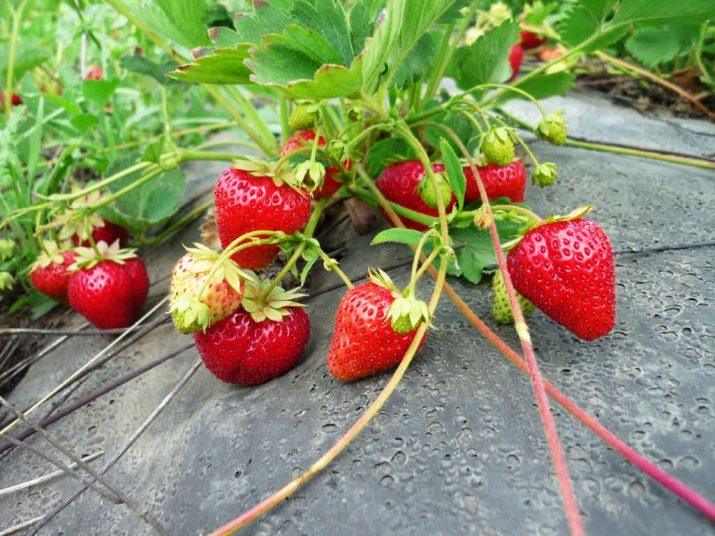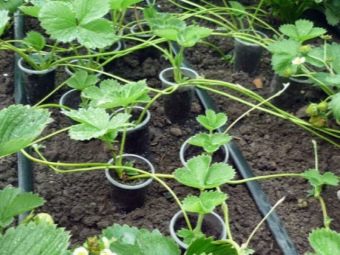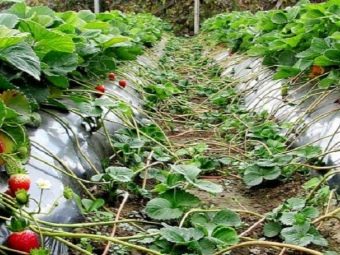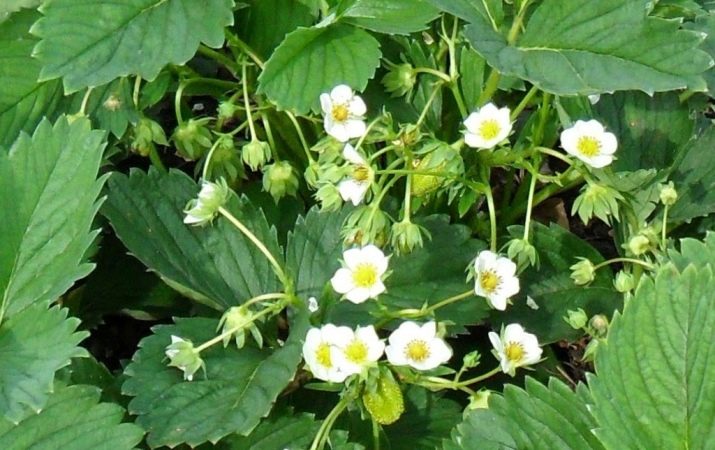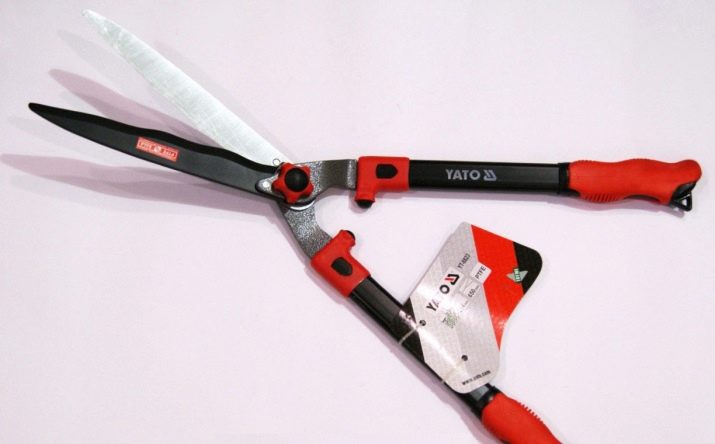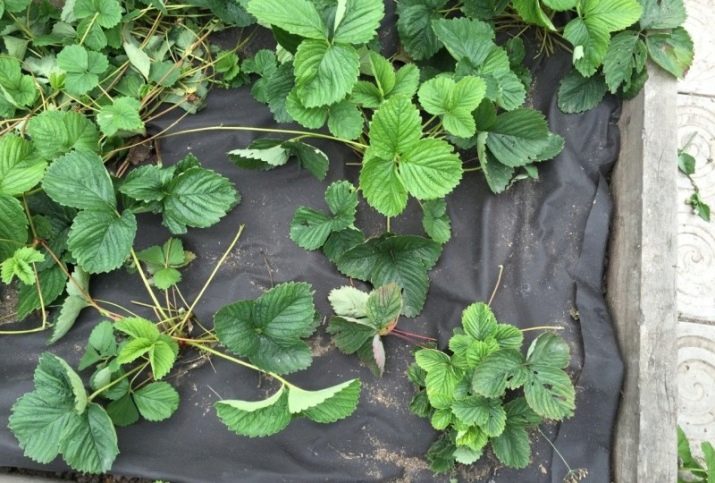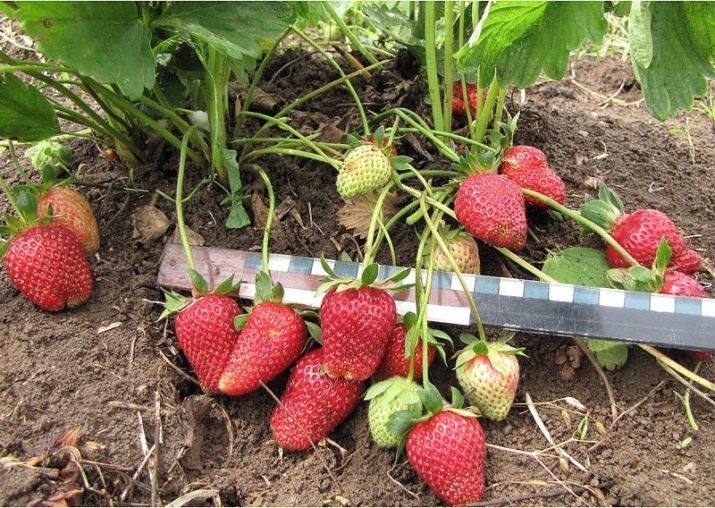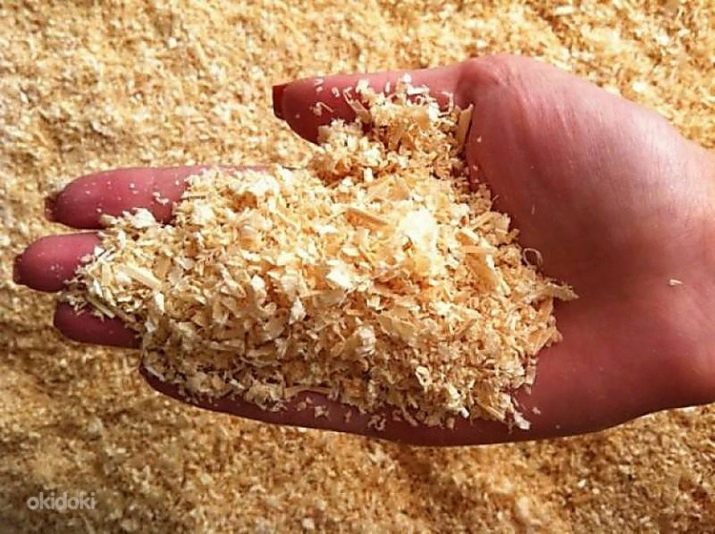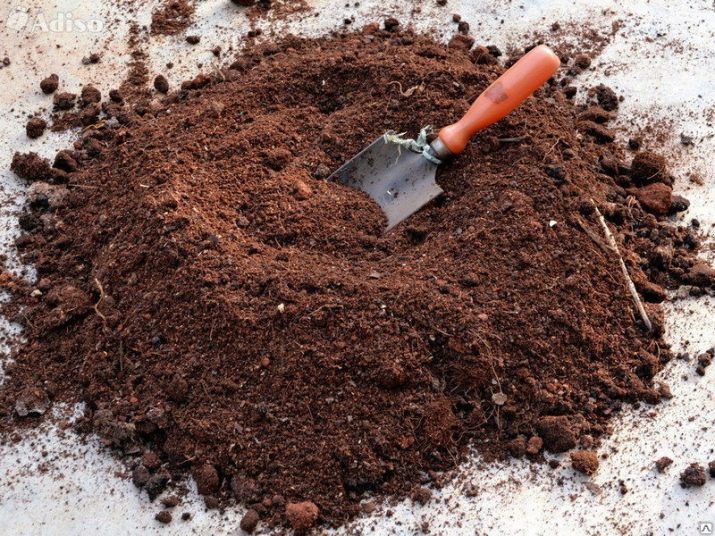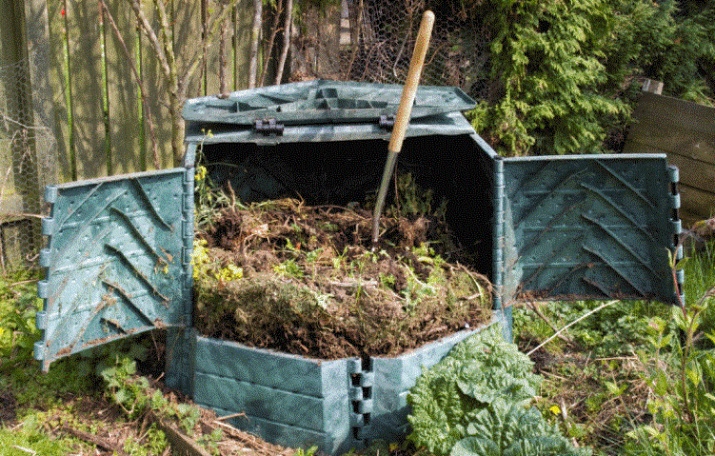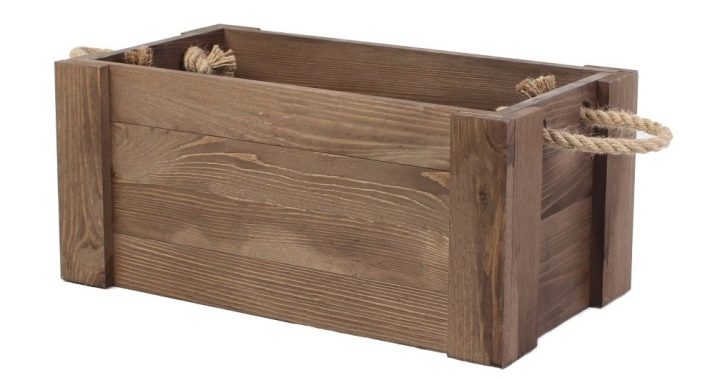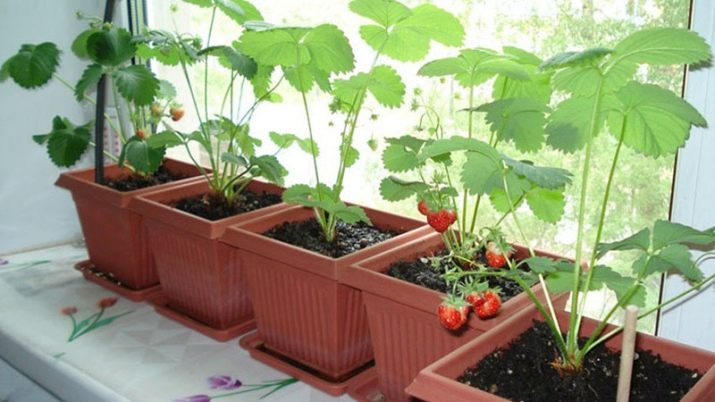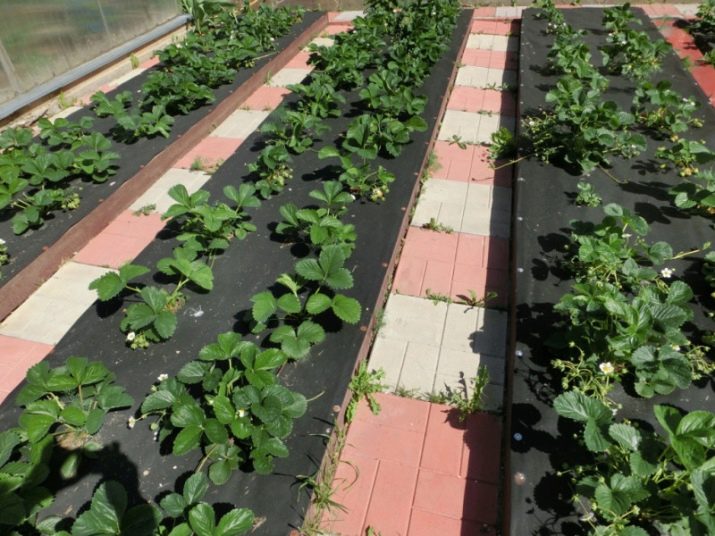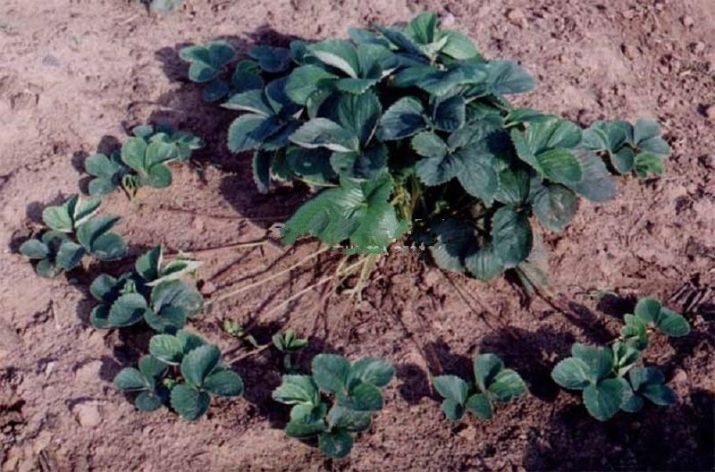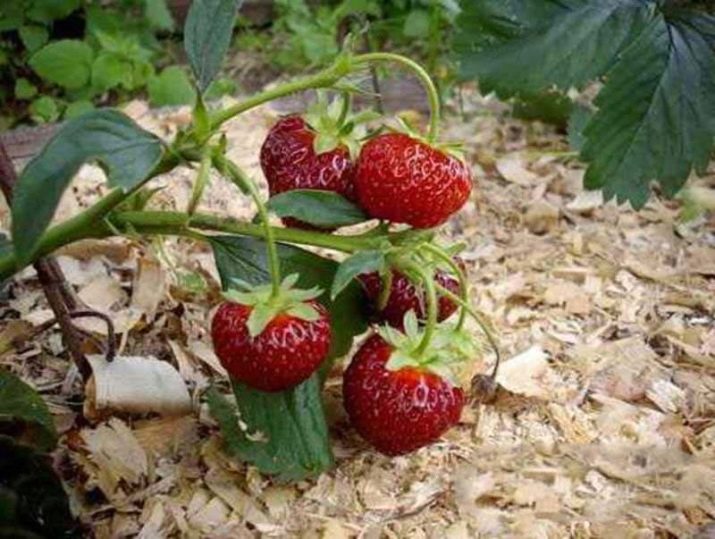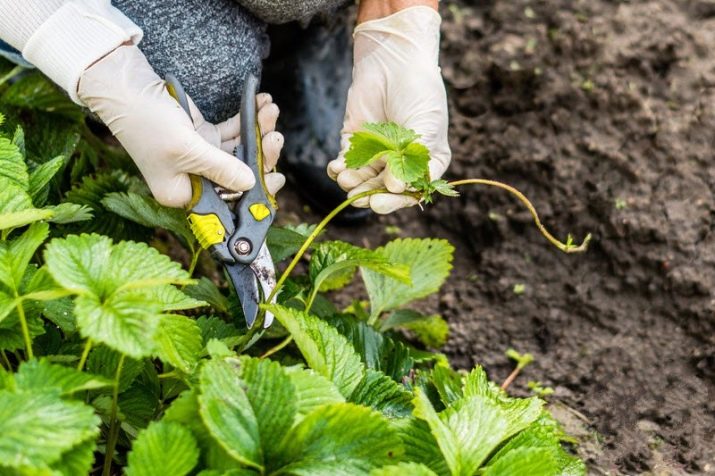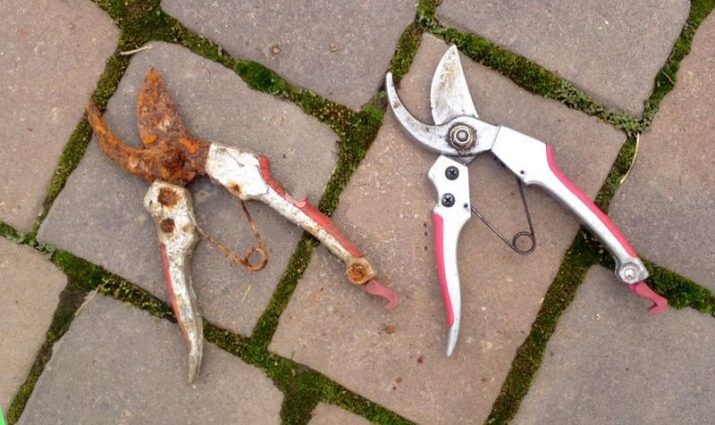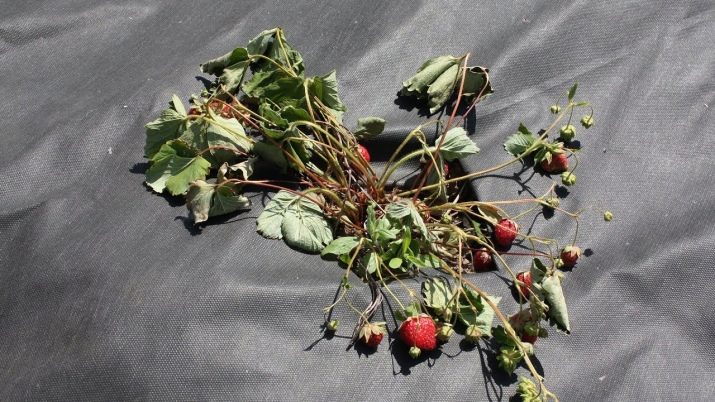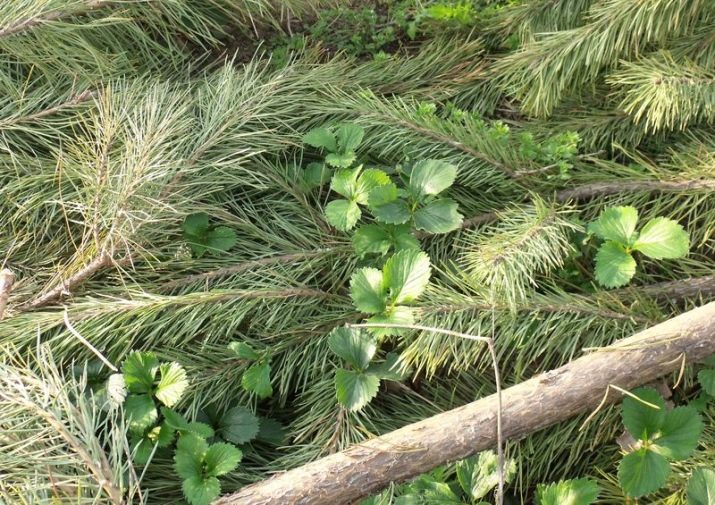How to plant strawberries with a mustache?
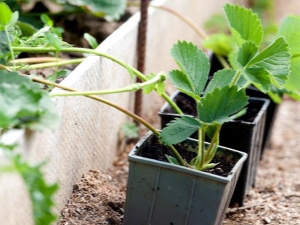
Strawberry is a good, attractive berry for consumers.But for its successful cultivation, it is sometimes necessary to multiply it with a mustache. Before performing this procedure, it is necessary to investigate all its subtleties and possible nuances.
Advantages and disadvantages
Rising prices cover all or almost all products. Buy ready seedlings becomes year after year more difficult. And this trend is unlikely to be broken in the foreseeable future. But there is an easy way out - you have to seed the strawberries yourself. This will avoid excessive exposure of the culture in one place.
The simplest variant of seating is precisely the use of whiskers. There is no need for:
- special premises for the cultivation of seedlings;
- soil use;
- the use of boxes and boxes;
- picking;
- careful finalization after moving to free ground.
If the work is carried out carefully, you can engraft all plants. At the same time, the main varietal characteristics are reproduced 100%.
After all, breeding a mustache does not lead to a change in the genetic code. Some gardeners even manage to breed F1 strawberries with a mustache. But in this case, the accuracy of reproduction of the original properties is not provided.
However, it is worth knowing that:
- agricultural technology is somewhat different from the usual;
- need to plant strawberries with a mustache until early August;
- It is not always possible to dial the required number of whiskers to perform the procedure as it should.
Optimal time
You can plant strawberries with a mustache at an arbitrarily chosen time (during the growing season). But it is better not to leave work for the fall and not to hold it in July, but to be engaged in this matter in the first half of August.
This approach allows you to achieve engraftment of outlets by September 15 or a little later. The first, albeit not a record, harvest, can be harvested the next year. The second vegetative season becomes peak; These are the requirements in the middle lane, in other regions they may differ slightly.
That part of the seedling material that is not claimed is removed. This should be done at the start of flowering and the formation of berries. This choice is due to the fact that the harvest will not be reduced.
The full mass of useful components will be redirected to the development of berries. Additional removal of shoots is made in the fall, along with pruning foliage.
The exact time of the autumn removal of excess whiskers is determined by the general climate and current weather. Experts advise to carry out such work, when the berries are already harvested. Removing unclaimed parts, it will be possible to force the development of the bush. If it is hot, it is advisable to work in the morning or in the late hours.
For work take only garden shears with perfect sharpening.
The choice of maternal bush and mustache
Success depends not only on meeting the deadlines. It is necessary to choose the antennae as carefully as possible. But start with the selection of a suitable bush. The number of whiskers issued is determined by the plant variety, in some cases they are not available at all. When fruits are sown, the best bushes should be noted, where the berries are the largest.
They are ideal for vegetative propagation. Before flowering, 100% of the inflorescences must be removed, and it is strictly forbidden to touch the whiskers. They are allowed to develop freely to the stage when separation from the main bush becomes possible. To get a solid harvest, be sure to eliminate all the early shoots. This allows:
- avoid excessive planting density;
- saturate the berries with the most beneficial substances;
- eliminate the impact of destructive factors (diseases).
All mustaches are removed from the main plant, except for 3 pieces. Those who do not take for seedlings, cut out. Selected specimens are used to consolidate the three daughter inflorescences. Be sure to leave developed sockets located near the middle of the bush. But those sockets that belong to the second and third lines must be removed.
An exception is made for well developed inflorescences of the second level.Those parts that are collected, will not only have to be rooted, but also pressed to the soil, covered with soil from above. Selected rosettes must grow until the final formation of the root complex. The separation of the inflorescences from the bushes is not allowed until the folding of the three leaves. After that, you can repot the prepared seedlings.
To eliminate errors, it is necessary to mark the selected bushes with ribbons or flags on the poles. It is undesirable to use the bushes selected for seedlings, also as a source of whiskers.
Both of these points greatly deplete the plants. Accordingly, an attempt to collect mustache from seedlings will only lead to the exhaustion of its forces. The bush will recover for a long time.
Soil preparation
But when the bushes are selected, the whiskers are cut off, and their landing is immediately impossible. It is necessary to prepare the ground first, and not all the soil will be equally suited. Where the strawberry grows 3 years and longer, the fruits are crushed. And even relatively small berries are collected in a smaller number. In addition to this point, it is necessary to pay attention to other circumstances.
So, any kind of strawberry does not tolerate excessive moisture. And nothing can be done with this if the plants are already developing. But at the stage of preparation it is quite possible to create beds of greater height. They eliminate fluid retention. Another significant aspect is high-quality lighting all day.
With a shortage of sunlight, you can lose both in quality and in the volume of fruits. Responsible farmers begin preparation in advance, even when planning landings for the previous season. The ideal crops of the previous year are cereals and beans of all kinds. But potatoes, cucumbers, tomatoes in this role are bad. From cabbage, too, should be abandoned, if you do not want the next year, the strawberry beds were infected.
Choosing the right place, you need to do his preparation. Where there is enough heat and light, where groundwater does not rise to the surface, there should be light ground. He does well with water and air. But not all soils that meet these requirements, have a sufficient level of fertility. Invalid:
- acidity less than 5 and more than 6 units;
- the presence of fungal spores;
- virus infection;
- the presence of harmful insect larvae.
Humus and turf are the best options. In principle, medium loams with high organic content are suitable, if only because they have limited acidity. The problem is that all such soils are dense and need loosening with additional additives.
The recommended natural mode of mitigation is sawdust. Use them in the form of reversed.
It so happens that the landing time has already come, and the raw materials are not completely pereperelo. Then sawdust need to soak for a while in a solution of urea. For every 10 kg of sawdust used 2 liters of water and 60 g of urea. In this 2 hours, the mixture is added a little ash and stirred until smooth. You can also loosen the earth with peat, thoroughly absorbing and preserving water.
But this option should be left in case of emergency. After all, peat significantly increases acidity. It can only be compensated by adding 200 g of ash per 10 kg of the main reagent. But ash can be introduced only in the autumn months, as it contains the inhibitory development of plant calcium.
Therefore, gardeners should treat peat loosening with great care.
In some mixtures to improve the soil structure may include river sand. Only its large fractions will approach after thorough washing. And even in this case, the share of sand can account for a maximum of 10% of the total volume. In the absence of experience, it is necessary to focus on the simplest option. It includes, except for humus and turf, a fair amount of peat and hardwood sawdust fines.
Any composition containing turf is treated for vermin. For this purpose, the earth is watered with 1 liter of ammonia water per every 5 square meters. mOf the synthetic analogues, Roundup behaves well.
The chosen place must be freed from all sticks and needles, from foliage and twigs, from foreign debris. Earth is required to dig for 1 bayonet shovel.
When summer or early autumn strawberry planting is planned, it is necessary to start loosening at the latest 30 days at the latest. When calculating the landing spring digging should be done from September 1 to September 30. In the process of 1 m2 add:
- 50-60 g of potassium salts;
- 50 g of nitrogenous substances;
- from 80 to 100 g of superphosphate;
- from 6 to 8 kg of humus (sometimes replaced by compost).
Breeding methods
Potted
In addition to growing in open ground, you can plant strawberries in pots. Effective cultivation of plants in this mode is possible only with high-quality lighting. Full coverage should be from 5 hours per day and above. Therefore it is necessary to choose only balconies, directed to the south or south-west. Even among them, it is worthwhile to reject excessively shaded places and houses located near highways.
On the glazed loggia you will have to use white curtains or paper to prevent excessive heating of the plants in summer. Since the roots are buried by 250-300 mm, it is on such a height that the pots should be oriented. The tanks themselves must be bought in white, and below there should be channels for drainage. It is not allowed to use pots with water passing walls.
Experts believe that the best choice is plastic and ceramic containers or boxes of polished wood with a volume of 3 to 10 liters.
Regardless of whether it will be planted in the pot in the summer or in another season, there are general requirements for preparing the land. There is no need to use the drainage layer of expanded clay. You can saturate the entire volume of soil. The ideal solution in this case is the combination of peat from the lowlands with 20-25% loosening substances. What is absolutely worth avoiding is the use of land taken at the dacha (this rule is observed when grown in cups).
“Economy” of this kind will result in excessive compaction and excessive moisture of the plants. Get a solid crop will not work. Properly plant strawberries from a mustache in spring is possible only in the second half of April. Then the impact of frost is minimal danger, and the heat will not have time to enter into their rights. It is the spring period that is optimal for planting mustaches in harsh climatic areas - at any other time the culture will not take root.
On the beds
Strawberries without roots are still often tried to grow on ordinary garden ridges. And there are a number of their subtleties. So, when planting in a shaded place the sweetness of the berries will be small, but the aroma will noticeably increase. It is these fruits that are best suited for making jam and jam, for drying and other types of processing. Strawberry planting next to strawberries and other members of the rose family is categorically unacceptable.
Nearby should not be any fruit trees, as well as bird cherry and wild rose. Holes for future bushes should be located at a distance of about 0.4 m from each other. Such characteristics will allow all plants to fully develop. The width of the strips is recommended at a level of 0.2 m, with a dividing groove of about 0.3 m.
The landing strips are oriented westward from the east, so that the illumination is uniform throughout.
All selected whiskers sprinkled with a small portion of the soil. Watering them should be plentiful. Seating is done after the appearance of the autonomous root complex. Normally this happens in 14 days, but sometimes it can happen faster. Recognize this result can be by looking thick beds.
It is advisable to wait for a cloudy day without rain. Cutting off the uterus is made by shears, it must be done in one step. Digging into the soil should be dug with a pair of paddles.They are stuck on the left and on the right, after which, with careful movements, they loosen the mustache. It is impossible to pull sharply, because the sensitive structure of the plant is easily torn.
The extracted shrub must be transplanted to a new location, where a well is prepared for it in advance. They form a tubercle at the very bottom, where they put a sapling. Do not bend and compact the roots. If they are excessively long, an incision is made. It is recommended to raise the point of development of the antenna on 10-20 mm above the ground.
Violation of this rule can lead to rotting of this part of the plant, either to drying out or to freezing in winter. All planted bushes should be immediately watered. At the same time it is necessary to spill the foliage. Freshly watered plantings immediately mulch. The best cover is straw.
If it is impossible to use straw, it is replaced with shavings, mowed grass, moss or sawdust. When the mulch is laid out, planting is covered with covering materials. This is necessary for optimal rooting of strawberries.
If everything is done correctly, the whiskers before the onset of the cold weather will have time to get used to the new position. That is why in the near warm season it will turn out to eat your own sweet berries.
Aftercare
But not everything is as simple as it seems ... A lot depends on the subsequent care. Violations in it can erase the entire initial success. As with other plants, strawberry needs care throughout the vegetative season. To grow a crop of strawberries planted in the autumn, at the very beginning of spring it is necessary to cut off all the dried leaves from last year.
Do not leave and flower stalks. But strong green foliage should be left before the release of young greens. If there are still some extra mustache, they are also cut out. Very carefully clean the area from the old mulch. It absorbs pests and pathogens, so it can no longer be used.
In addition, with the mulch layer removed, the sun is heating up both the earth and the roots. Be sure to treat the beds with fertilizer, ahead of the beginning of flowering. The best reagent for this purpose is a solution of cow dung mixed with trace elements. 0.5 l of the slurry is diluted with 10 l of water, auxiliary components are injected into a solution of a maximum of 10 g. The prepared liquid is consumed in 1 l per bush.
If there is no desire to tinker with manure or it is unpleasant, you can take complex fertilizers. The best results are achieved with those compositions that are specifically designed for strawberries. Having fed strawberries, the ground is loosened at intervals between the bushes. One such step raises productivity to 15%. When the strawberry last year already yielded a crop, simultaneously with loosening, 400 g of ash per square meter were injected into the soil. m
This is not only an excellent organic fertilizer, but also a means to eliminate the danger of the invasion of slugs. Ash-treated strawberry bushes are much less likely to suffer from gray mold. It happens that when the land is exposed, open roots are found. They just fall asleep again with the earth. Additionally, mulching is carried out with straw, leaf humus and hay (its layer reaches 40 mm).
Important: before carrying out any pruning it is worth disinfecting the working tool. Ideally, such treatment should be repeated during the transition from one plant to another in order to completely eliminate the transfer of infection. The earliest watering is in spring, when active growth begins.
Before flowering, you must constantly take care of moisture retention. Re-irrigation will require:
- when the flowering starts;
- when loading ovaries;
- when the harvest is taken;
- just before the onset of stable cold weather.
Water flow should be such that the ground becomes wet at 0.4 m from the surface. A repeated test is carried out in 48-72 hours. A clod of earth taken from the same depth should not turn into dust and stick to hands. To feed strawberries in the first year is extremely rare, only if the plants show signs of trouble.This is mainly required in the second year of development.
Experienced Gardeners Tips
Even in the country without the use of sophisticated technology can get very attractive results. But there are already a number of nuances that have been accumulated by the experience of many people. Ignore them unreasonable. All planting material should be bought only from reputable suppliers. In order for the transplanted plant to take root as soon as possible, the soil around it should be slightly loosened.
When placing an outlet in the ground, it is imperative to pour 5 liters of warm water on it for about 1 square meter. m. If sawdust is used as mulch, they should be scattered across the ridge and create a layer of 70-80 mm. This technique allows you to save moisture from irrigation for 60-90 days.
According to its characteristics, mulching with pine needles is quite close to mulching with sawdust. However, this method cannot be used for several years in a row, since the acidity of the soil will increase to an unacceptable level.
See the following video for tips on breeding strawberries.

